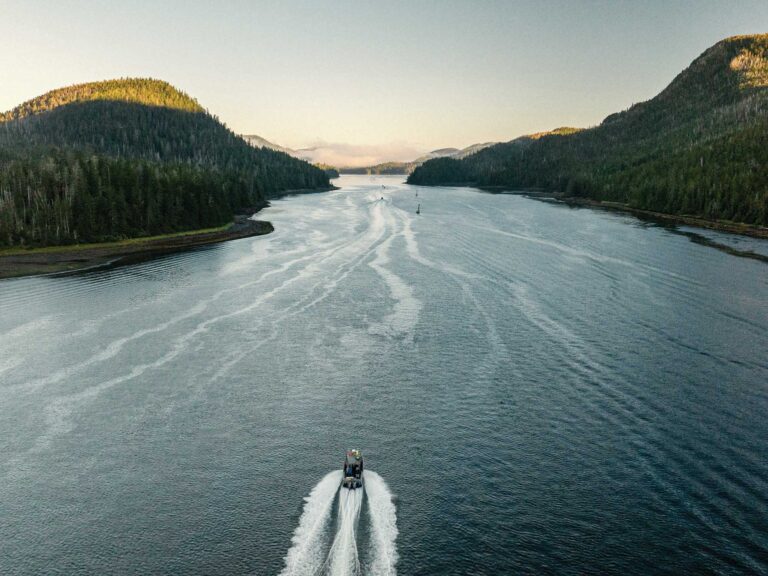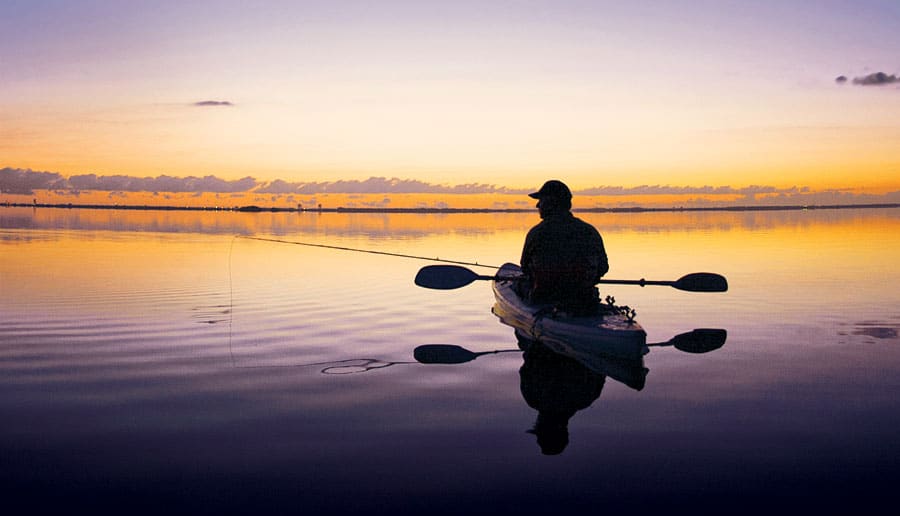
Hey, Mike,” I said, “pole over to your left about 30 yards; I want to get a few silhouette shots of you with that orange glow blooming on the horizon.” Mike Dill and I had launched about 40 minutes earlier, Dill in his square-backed canoe, me in my kayak. In total darkness we paddled our way across smooth open water toward a large flat about a quarter-mile offshore on the eastern side of Florida’s Banana River no-motor zone (NMZ).
There’s not a lot to do in the dark, except perhaps collectively plot an attack strategy for the 40-inch-class redfish and black drum that you and your companion hope to find when the sun begins to rise. Or, in the case of a solo trip, counter the monotony of paddling by counting satellites racing across the predawn sky.
Since Dill was rowing backward using oars, he used my eyes, which were fixed on a set of lighted buildings adjacent to a Cape Canaveral launch gantry. Nearly an hour after launching, we arrived at the flat just as the sun was radiating a red-orange glow to the east. Perfect timing!
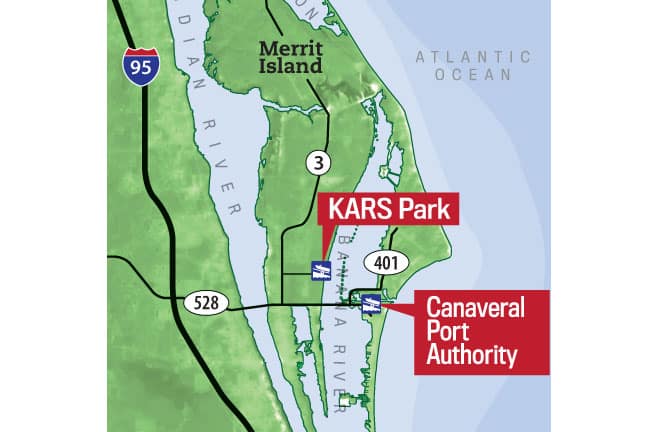
Fashionably Late
Dill stowed his oars, assembled his push pole and moved into position as I reached behind me for my camera. An uneasy feeling hit me as I blindly groped behind my small lunch cooler, where my case should have been. A second later, it was painfully clear that my gear was not there. A wave of panic set in, but I knew what I had to do: race back toward the cars with my fingers crossed, hoping I’d find my beloved floating camera case somewhere along the way.
I left Dill alone on the utterly smooth flat, praying I’d find the box within a few hundred yards but prepared to accept an hour-plus worth of work before I could catch up with him. My anxiety was compounded by the fact that I was going to miss fishing the best part of the morning!
So I paddled like a crazy man all the way back to the cars without finding the floating box. A few other anglers launched while I was plowing in the wrong direction, but they were out of earshot and I was sure my floating case would be along my path in the windless lagoon, provided I was on the right reverse vector.
Thankfully, I did find the case, which I had apparently left next to my pickup truck along the road. I was lucky it was still there, and after securing it to my kayak with bungee cords, as I should have done earlier, I paddled hard in the direction I had left Dill.
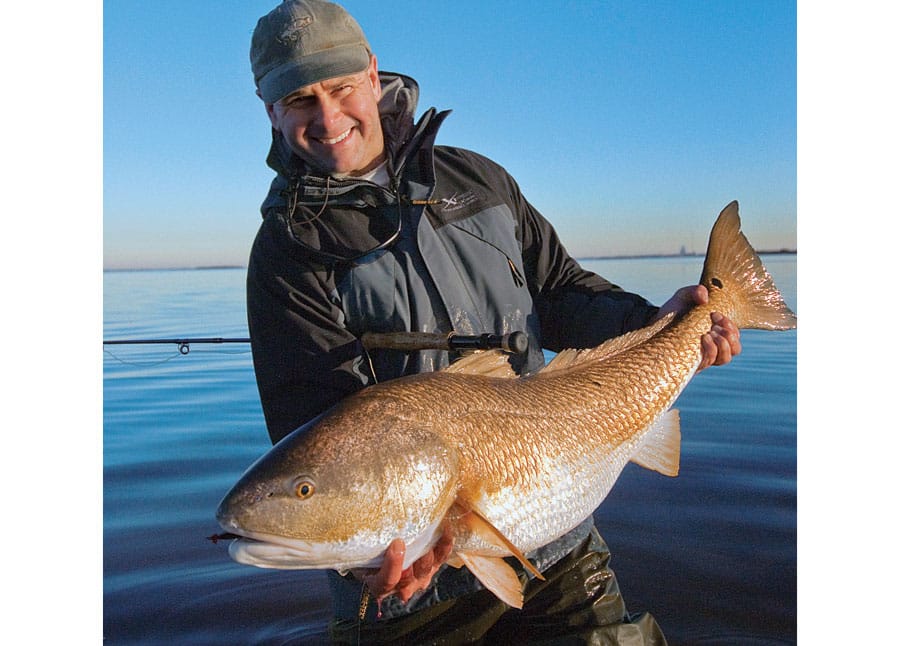
Physically wasted, uncomfortably sweaty but extremely grateful that I still had a camera, I finally spotted Dill at the northern end of the flat. He was out of his canoe, which was a good sign. I dug my blade in hard and pulled against the drag of the water, wanting to close the gap between us as fast as possible. As I approached, it appeared he was fighting a substantial redfish.
I glided within earshot to see the water boil 20 yards from his rod tip and hear his drag complain against the pull. “Nice fish, Mike,” I said, sliding my anchor overboard. “Not exactly how I planned my morning, but at least I made it back in time to shoot your toad redfish.”
“You found your camera case?” he asked, incredulous.
“Yeah. Back at the car where I left it.”
“Well,” he said, attempting to downplay what I knew was a perfectly executed operation, “I found a school of the big girls just off the point about 30 minutes after you left. It took me a while to move into casting range without spooking them — they were floating, tails and backs out of the water — but I managed to get in close for a good cast.”
Under dead-calm conditions, even the slightest pressure wave from a canoe or kayak will sink a floating school. Typically you can expect to get one, and only one, shot on those mornings when the air is still enough to hear a casual conversation between anglers from nearly a quarter-mile away. And when the hookup occurs — or doesn’t — the school will be on to you before the second cast, bolting for the mid-lagoon channel markers after sensing your errant movements or the panic of their hooked mate.
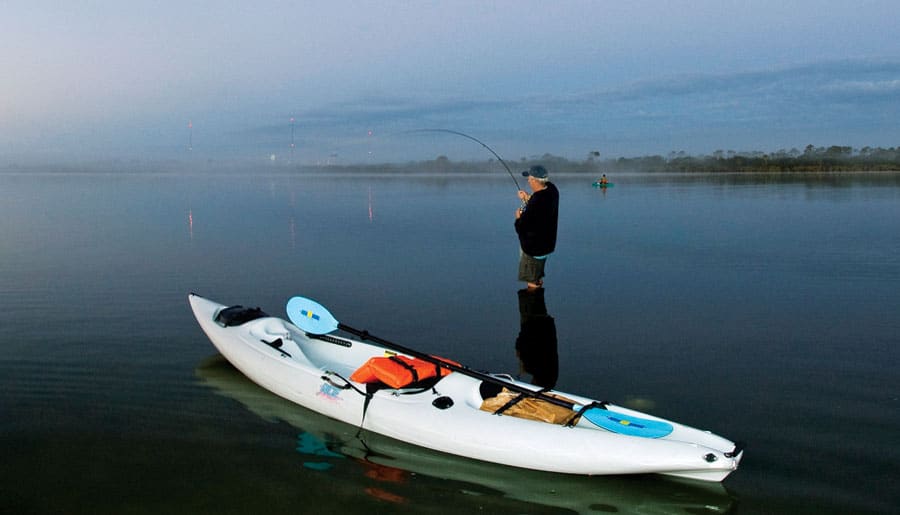
Enter the Zone
The 10,500-acre Banana River no-motor zone has become arguably one of the richest and most balanced protected marine ecosystems in the United States. Even before its establishment in 1994, substantial keep-out zones, created by NASA for apparent security reasons, provided sanctuary for popular species, such as redfish, spotted seatrout and black drum. I say balanced because, unlike many other areas of the state, where you’ll rarely find redfish longer than the 28-inch slot limit for keepers, the NMZ hosts redfish, black drum and trout of all sizes and lengths.
I fished the area prior to its becoming a canoe- and kayak-only sanctuary and marveled at the number of redfish prowling the shallows even back then. While the Mosquito Lagoon and the adjacent waters of the Indian River and Banana River, outside the NMZ, also hold large redfish and black drum, those fish invariably experience more pressure from powerboat-ensconced anglers than the ones living within the confines of the NMZ, where overall fishing pressure is negligible.
Even on bluebird days, when perhaps a dozen anglers might be encountered in the NMZ over the course of a day, the quiet nature of the vessels employed ensures the fishery remains exceptional. Besides, you do not need to be the first on the flat to score here.
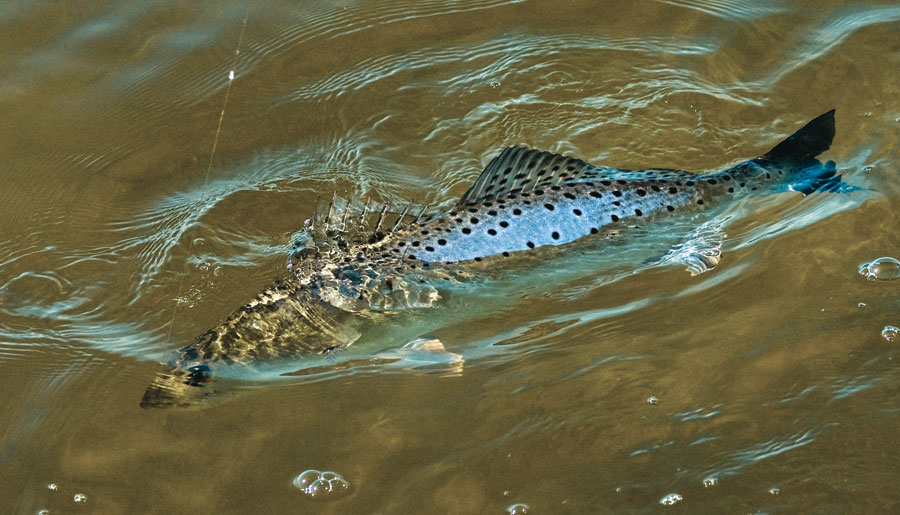
When it comes to fishing the NMZ, Dill is normally a sleep-in type of guy who waits for the morning people to work their way north from the designated launch area before he climbs out of bed (ironic, because when it comes to snook fishing, Dill is a nocturnal beast). On the other hand, I can’t deal with not being the first guy on the flat and have been known to launch as early as 4:30 a.m., a characteristic flaw that has earned me a charming moniker from my fishing buddies that begins with ballistic and ends with — well, let’s not talk about what it ends with.
Regardless of on which side of the Pepsi/Coke timing issue we stand, Dill and I both have caught our fair share of trophy fish. As a “sweeper,” Dill prefers to come in after the crowds and targets those fish on the flats that tend to show later in the morning, particularly during the winter months, when the water warms as the day wears on. His canoe is best suited for fishing later anyway. Because he’s able to stand in it and pole efficiently, it provides him a higher vantage point and therefore greater visibility.
On the other side of the coin, my kayak puts me low to the water, and I prefer dawn to see those fish that float at first light, even if they are not feeding. Both strategies have merit, and occasionally I do get Dill out of bed for the zombie patrol.
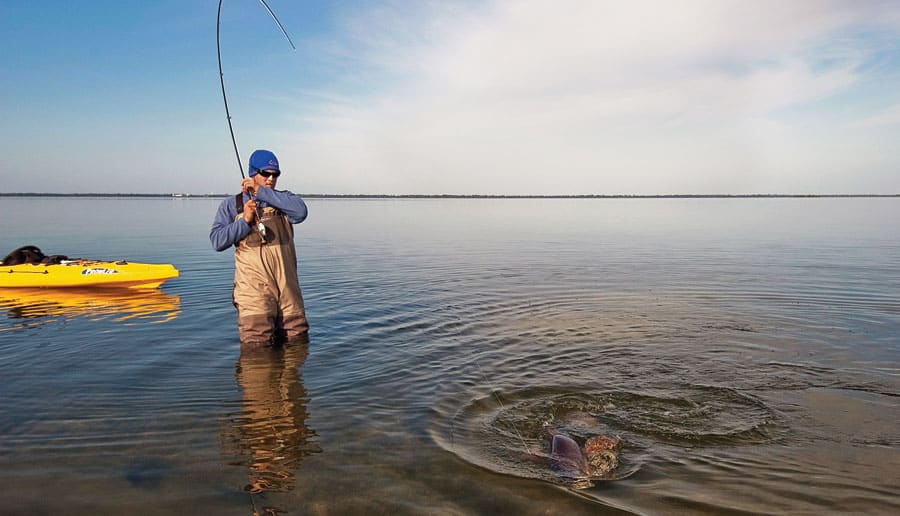
Pre-9/11
The NMZ encompasses roughly the entire northern end of the Banana River, from State Road 528 north to the NASA Causeway. Technically speaking, there is a small chunk of water north of State Road 528 and west of the Intracoastal Waterway (ICW) open to motorized vessels all the way up to Kennedy Athletic, Recreation and Social (KARS) Park. However, even the ICW is closed north of KARS Park.
Between 1994 and 9/11, the NMZ was open to all anglers, though NASA employees had “preferred status.” On the western shore, KARS Park was open only to NASA employees or their designated guests, and the guard at the gate made sure of that. To fish the west side if you were a non-NASA employee, you had to launch from the barge canal parallel to State Road 528, which added at least an hour’s worth of paddling.
NASA guys, however, could not only access KARS Park but also launch at designated areas along the NASA Causeway to the north, or at the port on the northeastern corner of the NMZ, where the ships that hauled in the solid rocket boosters were moored. Yeah, it wasn’t fair.
On the eastern shore of the NMZ (prior to the building of the Port Canaveral cruise terminal), anglers could launch from the 401 causeway, parking at the fence near the entrance of the Cape Canaveral Air Force Station. They could then work their way north to the NASA Causeway along the eastern shoreline if they were so inclined. This was just fine for non-NASA folks, as there are plenty of good areas to fish from just north of the launch area.
Post-9/11
Everything changed on Sept. 11, 2011. As the nation shuddered at unfathomable terrorism, all U.S. government agencies tightened their respective security. NASA was no exception. For several years, the entire NMZ was shut down to all traffic, making for some very sad seasons for Dill, myself and many others who enjoyed the solitude and exceptional fishing of the sanctuary.
After several years, the security concerns slowly relaxed, and the western shore was opened once again, with NASA folks getting preferential treatment. Since I wasn’t on the “preferred” list, I had to get creative. So I began strapping my kayak to my 16-foot skiff, launching at Kelly Park, just south of State Road 528 on the Banana River, and cruising (yes, in the dark) up to the southwestern boundary of the NMZ. Remember that a small slice of the NMZ remains open to motorboats up to KARS Park. From there I’d park the skiff just offshore, launch my kayak and paddle north to my favorite spots. It worked great, although it added some trepidation to the trip. At the end of the day, as I paddled back, I worried: Would my skiff still be there?
Sometime later I began to hear rumors that the expansive and often more productive eastern side of the NMZ was again open to fishing. I contacted the local park ranger to ask if this were true. He e-mailed me back, stating that while it was indeed reopened, unless I were a NASA employee, I could not launch from NASA property or even from the southern shore off the 401 causeway adjacent to the cruise terminal. No worries! I had the skiff system down to a science and was able to exploit the eastern shore for several months by parking my skiff at the junction of the southern NMZ boundary and the ICW, in the middle of the Banana River.
A half-season later, security reopened public launching from the 401 causeway adjacent to the Port Canaveral cruise terminal, negating my need to use my skiff. Generously, and at the same time, NASA finally opened up KARS Park to civilians for a modest $5 launch fee.
Sweet Seclusion
Eventually Dill landed his big redfish. It was a beast, measuring over 42 inches, but happily, it was not the only fish of the day. We didn’t receive pressure from either the north or the south. Surprisingly, we had the entire eastern shore to ourselves (the two guys I saw while chasing my camera never ventured north of the first flat). While the morning matured, the sea breeze we’d expected did not, and we had virtually windless conditions all day long.
It was a long paddle, but we did find schools of large black drum and redfish finning and basking along the edge of a narrow flat to the north. The fishing was tough but rewarding; the calm conditions gave us but single shots.
By late afternoon, a sea breeze finally did kick in, and we’d had enough rod bending to call it a day. As we paddled back, Dill began strategizing: “What are you doing next Friday? If you’re not working, how about we try the west side?”
“Yeah, I’m off — sounds like a plan,” I replied.
Then he added, “Great, but how ’bout we not do the zombie patrol again. I wanna sleep in.”
Coke or Pepsi, it makes no difference; they’re both great, and so is the NMZ. No matter what time you launch or which side you ply, you are sure to find solitude and outstanding fishing in one of Florida’s finest fisheries.
Helpful Hints
For both big redfish and black drum, I often use a lighter 7-weight rod (for its stealthy characteristics) rigged with a weight-forward floating line designed for cold water. For all-around use, a 9-weight rod is likely a more appropriate choice for most anglers, as it casts weighted flies much better and can handle bigger fish easier.
I fish both in and out of my kayak, depending on water depth and bottom hardness. Black drum are often a bit deeper and off bar edges that have hard sand bottoms. Since they are less wary than big redfish, it’s fun to stalk them on foot. On the other hand, I almost never fish out of my kayak when hunting big reds; they’re just too sensitive to the noises that come from wading.
Almost 90 percent of the time, my fly of choice is a black Clouser Deep Minnow. This fly works great for black drum and redfish. My second choice is a Merkin Crab tied in dark colors. While redfish have good eyesight and will move to the fly when they see it, black drum have poor vision and literally must be beaned to see and, hopefully, eat the fly.
The NMZ offers trophy fish all year long, but Dill and I prefer the winter months for two reasons. First, there are more black drum on the flats in the winter. Second, when the water is hot, the fish are active only for a short period during early morning, whereas during the winter months, fishing often improves as the shallows warm throughout the day.





